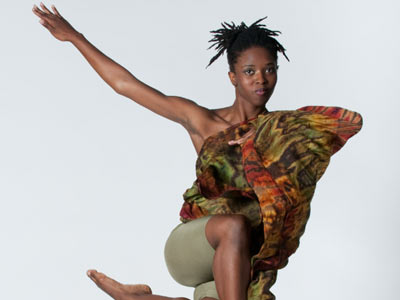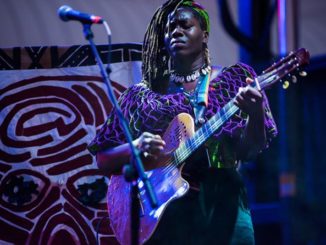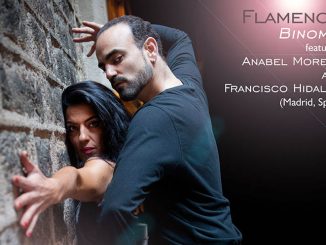 As a native of Brazil now living and working in the U.S., Brazz Dance Theater choreographer and artistic director Augusto Soledade draws on an enormous variety of dance forms. He favors contemporary dance but the details – a twist of the hips, a winding spine, an explosive leap – reveal his many other influences: African and Afro-Brazilian, ballet, modern dance, and hip-hop. And then some.
As a native of Brazil now living and working in the U.S., Brazz Dance Theater choreographer and artistic director Augusto Soledade draws on an enormous variety of dance forms. He favors contemporary dance but the details – a twist of the hips, a winding spine, an explosive leap – reveal his many other influences: African and Afro-Brazilian, ballet, modern dance, and hip-hop. And then some.
This weekend, Brazz Dance celebrated their Arsht Center debut with Mistura Fina, a program of five choreographies. Every piece was distinctly contemporary, abstract, and original, fueled by music as diverse as Soledade’s choreography.
The evening began with the sound of small bells that seemed to come from a woman’s form. Her back shifted with small undulating movements. As the lights came up, that single form became two. A man was dancing with her, and as he held her close, he played the bells at the waist of her costume. Even when they started to travel across the stage, he never lost the beat. From there, percussionist Kenneth Metzker moved around the space of the stage, picking up a djembe, then rattles. The dancer, Ilana Reynolds, followed his changes playfully until he finally sat down with a shining set of hand-painted congas. He was then left alone on stage to shine in the spotlight with a quiet, jamming rumba solo.
The second work, “Oxossi,” began with a spoken word performance by Summer Hill Seven, artist-activist extraordinaire. In a poetic story song, Summer Hill Seven told a story from Brazilian Candomblé about the hunter, Oxossi, who killed a monstrous bird with only one arrow. Then five dancers exploded onto the stage with an original African-flavored choreography driven by live percussion. In Afro-Brazilian folkloric dance, the hunter Oxossi has his own signature movements and rhythms, but neither of these made an appearance in “Oxossi.” Soledade was clearly not going to indulge in full-fledged folklore. Visually, this was one of the night’s most vibrant moments, with colorful lights and costumes that evoked many cultures at once.
Each work that followed showed a slightly different side of the Brazz Dance repertory, from quiet and lyrical moments in “Cordel” to theatrical storytelling in “Diaries of an Outlaw,” to the bold cultural juxtapositions of “Altars.”
In many ways, “Altars” exemplifies the conceptual aspect of Soledade’s multicultural style. Before “Altars” began, Soledade entered the stage with an armful of lilies and an introduction. “Spirituality has nothing to do with religion,” he said, and then passed flowers out to the audience. “You’re not going to have to do anything embarrassing,” he promised, “you’re going to come on at the end to help us build an altar.” As the dance piece unfolded, Bach’s Cantatas filled the air, evoking a distinctly European Christian rapture, while the dancers’ bodies described a ritual encounter with each other, themselves and the earth. They squatted and shivered and opened their mouths as if in a primal scream. As Soledade said in the introduction, “we are all spiritual,” but these two distinct elements in “Altars” resisted complete integration. Of course the richness of difference is what gives Soledade’s choreography its life.
Given the overall variety of the Brazz Dance repertory, a more diverse group of dancers would make sense. This is an issue not only of ethnicity but also of dance background – there were only one or two dancers who could really bring the African movement to life. Even so, Brazz Dance Theater is a solid ensemble more than capable of articulating Soledade’s inspired choreography. Mistura Fina was one of the most exciting performances this season, revealing a choreographer who clearly loves what he does.
www.artburstmiami.com



Be the first to comment